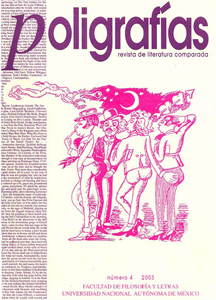Portia as Primavera: Cultural Memory in The Death of the Heart
Contenido principal del artículo
Resumen
Near the end of the second part of Elizabeth Bowen's novel The Death of the Heart, the cad Eddie calls the ingenue Portia "Primavera." I wish to argue that in this moment Bowen appropriates Botticelli's painting, Primavera, as a subtext for her novel and with it the grace and charm of Renaissance Italy. The virtual presence of Botticelli's Primavera, or, if not the painting, the Renaissance mythological portrait its name suggests, is perhaps one of the continuities that rule Bowen's text, seen or unseen by her. In any case, even if my arguments for Botticelli's influence are not definitive, it is useful to explore the affinities between Bowen's text and Botticelli's painting. Bowen's visual subtext locates her and her readers between Renaissance houses and modern streets. It endows her social satire and psychological portraiture with latent layers of cultural memory, the kind of memory that Bowen values as a stay against the emotional brittleness and material chaos of modern life.
Detalles del artículo
Cómo citar
Farris, W. B. (2012). Portia as Primavera: Cultural Memory in The Death of the Heart. Poligrafías. Revista De Teoría Literaria Y Literatura Comparada, (4). Recuperado a partir de https://www.revistas.unam.mx/index.php/poligrafias/article/view/31341
